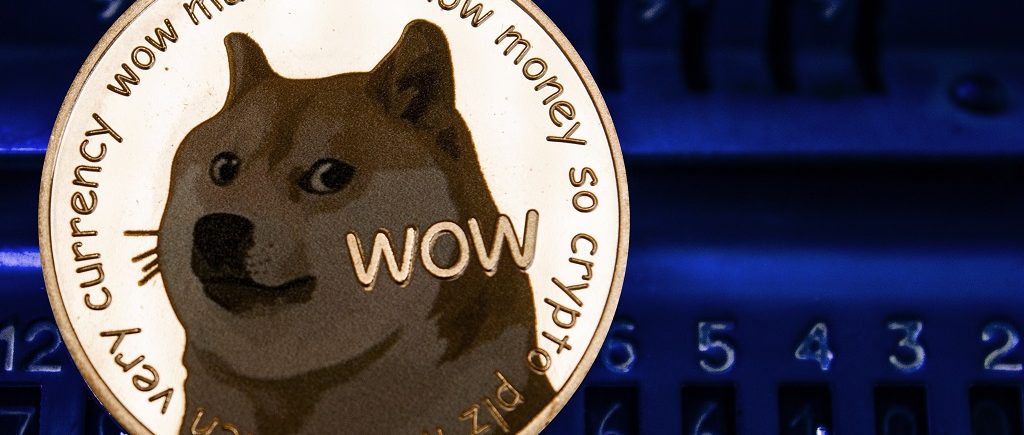With cryptocurrencies, the future is and will remain uncertain. The one factor that stirs hope to crypto traders and investors is that big players are starting to join the trading game.
On Wall Street, JPMorgan Chase, Morgan Stanley and Goldman Sachs are just some examples that employ dedicated cryptocurrency teams. In addition, mainstream hedge funds, managed by the likes of Alan Howard and Paul Tudor Jones, are pouring billions into cryptocurrencies.
Compared to 2018, there are more institutional investors with exposure to crypto and most see this as a real buying opportunity. Crypto has inarguably high valuations and no revenue stream. That is very much similar to growth stocks, tech. It is correlated but obviously it is more volatile because the market is less liquid.
People invest at their own risk and cryptocurrencies are not regulated by British financial authorities. All crypto investments are risky, but meme coins like Shiba Inu are chiefly volatile, and traders should be prepared to lose everything they invest.
The Financial Conduct Authority warned in January: “Investing in cryptoassets, or investments and lending linked to them, generally involves taking very high risks with investors’ money. If consumers invest in these types of product, they should be prepared to lose all their money.”
On top of being extremely volatile, most cryptocurrencies are unregulated, which not only adds more uncertainty but also means that investors have little or no protection against fraud. Bitcoin has once again fallen below $30,000 (£24,500), as the market continues to feel the effects of Terra’s devastating crash coupled with a general cooling in enthusiasm
Cryptocurrencies have endured a difficult start to 2022. Prices dipped again over the weekend after showing signs of recovery. The general mood around cryptocurrencies has eased. Investors appear to be moving away from cryptocurrency and towards less risky investments in the face of global inflation. The crash is also linked to the coin terraUSD (UST) collapsing after losing its peg to the dollar, which has also all but wiped out Luna, its support coin.
A further piece of bad news last week was Coinbase, the largest crypto exchange in the US, posting net losses of $430m (£348m), far worse than analysts expected, causing its share price to fall sharply.
A trend of both lower crypto asset prices and volatility that began in late 2021, but was quick to point out that it does not expect these conditions to be permanent. The news raised questions about whether the market has reached an expected cooling-off period, previously dubbed a “crypto winter”, or a more permanent chill, perhaps a “crypto ice age.
Why cryptocurrency crashed whether the price of Bitcoin and Luna could recover have become two major questions after crashing and price prediction for Bitcoin. Luna and TerraUSD (UST) are both native tokens of the Terra network, a blockchain-based project developed by Terra Labs in South Korea. CoinDesk explains: “The Terra blockchain is built on Cosmos SDK; a framework that allows developers to create custom blockchains and build their own decentralized applications on top of Terra for various use cases.
The Terra ecosystem contains more than 100 of these natively built projects. These include non-fungible token (NFT) collections, decentralized finance (DeFi) platforms and Web 3 applications. The goal of Terra is to be a peer-to-peer electronic cash system.
It aims to do this through the use of “stablecoins”, which are cryptocurrencies pegged to a real-life currency. UST is pegged to the US dollar, which means one UST is always supposed to be worth around the same as one dollar. Luna plays a vital part in this. CoinDesk says: “Instead of relying on a reserve of assets to maintain their peg, UST is an algorithmically stabilized coin. This involves using a smart contract-based algorithm to keep the price of UST anchored to $1 by burning Luna tokens in order to create new UST tokens.
In the Terra ecosystem, users are meant to always be able to swap the Luna token for UST, and vice versa, at a guaranteed price of $1 – regardless of the market price of either token at the time. Luna crashed due to Terra losing its peg to the dollar, due concerns over the Federal Reserve’s looming interest-rate hike.
UST’s value fell, which led to the algorithm issuing more Luna coins to try and recorrect. However, Luna’s value was also spiraling downwards.
The total supply of Luna went from about 725 million tokens on 5 May to about 7 trillion on 13 May. Meanwhile, Luna lost 99.9 per cent of its value. This is what hyperinflation looks like. The coin’s value tumbled from around $6.75 to less than one cent over just a couple of days, and is valued at $0.0002 as of Monday morning.
Leading crypto exchange Binance temporarily suspended withdrawals on Luna on Wednesday, and on Thursday night the Terra blockchain temporarily halted. Terra said it made the move to “prevent governance attacks”.
Terra’s official Twitter account added on Friday: “A post-mortem on everything that transpired the past week is in progress. It will be published ASAP.
These are tremendously difficult times for everyone affected. The feelings are still raw. Please be safe.

 Noor Trends News, Technical Analysis, Educational Tools and Recommendations
Noor Trends News, Technical Analysis, Educational Tools and Recommendations




